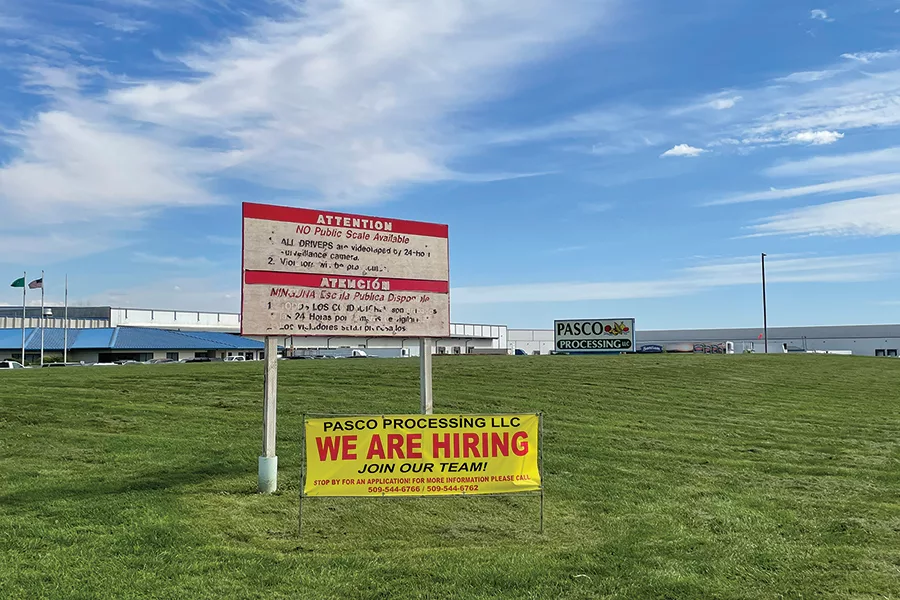
Home » Tri-Cities labor force shows signs of plateauing
Tri-Cities labor force shows signs of plateauing

June 12, 2025
The Tri-Cities labor market has a lot going for it in 2025 when it comes to workers.
Franklin County has seen the highest median wage growth in the state, Ajsa Suljic, the state’s regional economist, recently told the Pasco Chamber of Commerce. The county's median household income stood at more than $84,000 per year in 2023, higher than the average for the whole Tri-Cities, and up from just under $70,000 in 2019.
Unemployment remains relatively low, meaning employers are competing for the best workers. And the regional economy remains diverse, with large employers across numerous sectors such as contractor work at the Hanford site, health care, agriculture and more.
“If one industry goes down, there are others to pick it up,” she said.
Pasco’s massive new Darigold plant opened in early June with 75 workers and anticipates a labor force of 200 workers when it reaches capacity. The new Amazon warehouses in Pasco added hundreds of jobs within the last year.
But the Mid-Columbia’s reputation of having an ever increasing labor force is starting to weaken. And there are signs that the availability of skilled workers to skilled positions is trending in the wrong direction.
“We might have a broken bridge,” Suljic said. “In 10 years, the skill gap may grow even faster than it has before.”
At the state level, the unemployment rate stood at 4.4% and employers shed 12,400 jobs during the first quarter of 2025, according to the state Employment Security Department’s latest quarterly report. Nonfarm employment has been slowing over the past couple years and the first quarter of 2025 was marked by three consecutive months of declining employment levels.
“It is likely that post-pandemic job recovery and growth reached its limit in 2024,” wrote chief labor economist Anneliese Vance-Sherman in the report. “Both payroll counts and labor force statistics became less dynamic over the past couple years. Job growth slowed, and the size of the labor force and unemployment rates stabilized.”
The Tri-Cities have often fared better than the state, thanks to a relatively stable job market and an economy anchored by the Hanford site.
As of April 2025, the Tri-Cities labor force stood at 145,430 workers. Of those, 6,302 or 4.3% were unemployed. That’s on par with what the region has seen in April in recent years, though it is down from peaks in 2019 and the first part of 2020.
Suljic said the region’s population is growing but more slowly than in past years, with retirees becoming a growing proportion and thus, less likely to join the workforce.
“Our labor force is plateauing,” she said.
She also is seeing other shifts in workforce demographics and skill levels. More youth are entering the job market, and more jobs are being posted that require less education and training. That could feed into a growing skill gap that impacts higher level jobs, she said.
Other factors are also having an impact. Housing affordability has become an increasing concern as home prices have gone up 40% compared to 15% for weekly wages. The region’s previously hot construction market is cooling, Suljic said.
Yet the tight job market could still loosen up, given recent cuts to the federal workforce. Federal workers make up about 2% of total employment in Washington, comparable to the national average. But so far in 2025, unemployment insurance claims by federal workers are up 71% over last year.
Despite all that, Suljic said there’s still a generally positive outlook for the Tri-Cities. She anticipates population growth will keep pace with the growth in jobs. And she sees several industries growing through 2026, such as leisure and hospitality, transportation and health care.
Local News Mid-Year Economic Review
KEYWORDS June 2025
Related Articles
Related Products





